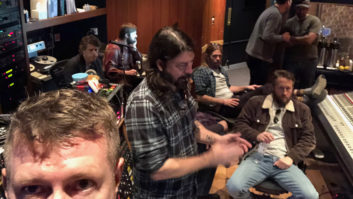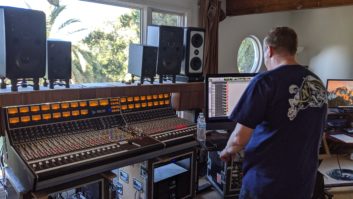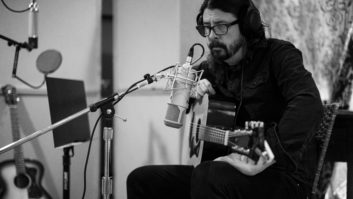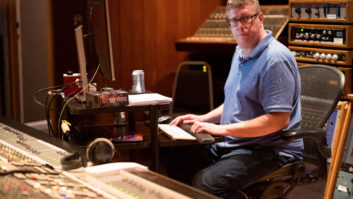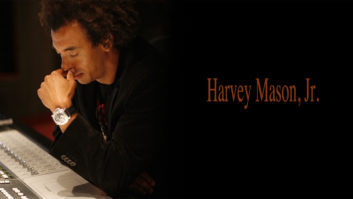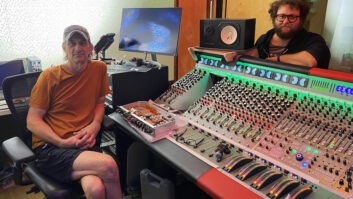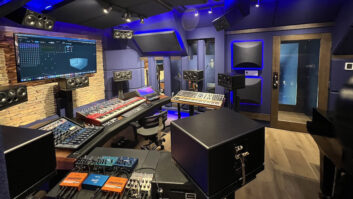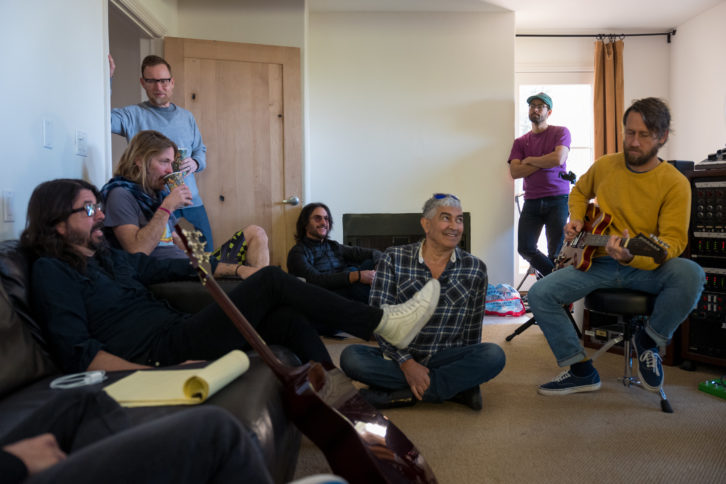
Part 2: Setting Up Shop
The Foo Fighters production team was essentially the same that had worked on Concrete and Gold. Guitar tech Alastair Christie served as the de facto “studio manager,” while Samon Rajabnik handled drums, guitars and assisted in engineering; Jerred Pollaci and Oliver Roman assisted all around, with Julian Burg assisting with engineering. Between them, they mapped out what equipment would be required and how/where it would be placed.
“After Dave left the meeting,” says Alex Pasco, ”it was just me, Darrell [Thorp], Samon, Ally [Christie] and Julian. We just brainstormed and started pulling together who has all this gear. What do we need? What do we want? Darrell, what do you need? How are we gonna do this?”
Recording Medicine at Midnight, Part 1: Foo Fighters in the House
The downstairs bedroom that Grohl had suggested for the control room became the guitar amp room, “because it had a lower ceiling and was more of a box,” Pasco explains. A larger, upstairs bedroom became the control room— wide, with windows across the front, balconies on either side. “It was great. We had couches, and there was a bathroom right attached to the control room.” Grohl would later record his vocal for the album’s title track in that bathroom.
Foo Fighters’ own API 1608 console, which Grohl had bought 10 years earlier and was put to use in 2010 by producer Butch Vig for their Wasting Light album, was lifted up the stairs. “Truthfully, I didn’t need the console,” Thorp explains. “I just wanted it because we were in a house, not a proper studio, and I knew the patch bay would be limited. Plus, Dave is notorious for having wild ideas come out of his brain, which are always amazing. If he comes to me and Alex and says, ‘Hey, I want to do this,’ we can’t be telling him, ‘Dude, it’s gonna take us two days.’ I don’t like to say that to my clients. I like to say, ‘Hey, gimme a couple of hours.’”
The team also took advantage of it for both routing and extra EQ, the desk containing API 550A discrete 3-band EQ modules. “Dave also owns an original API 1604, which is dead in its frame. Somebody took the API 312 mic preamps out of them and put them all in 500 Series racks.”
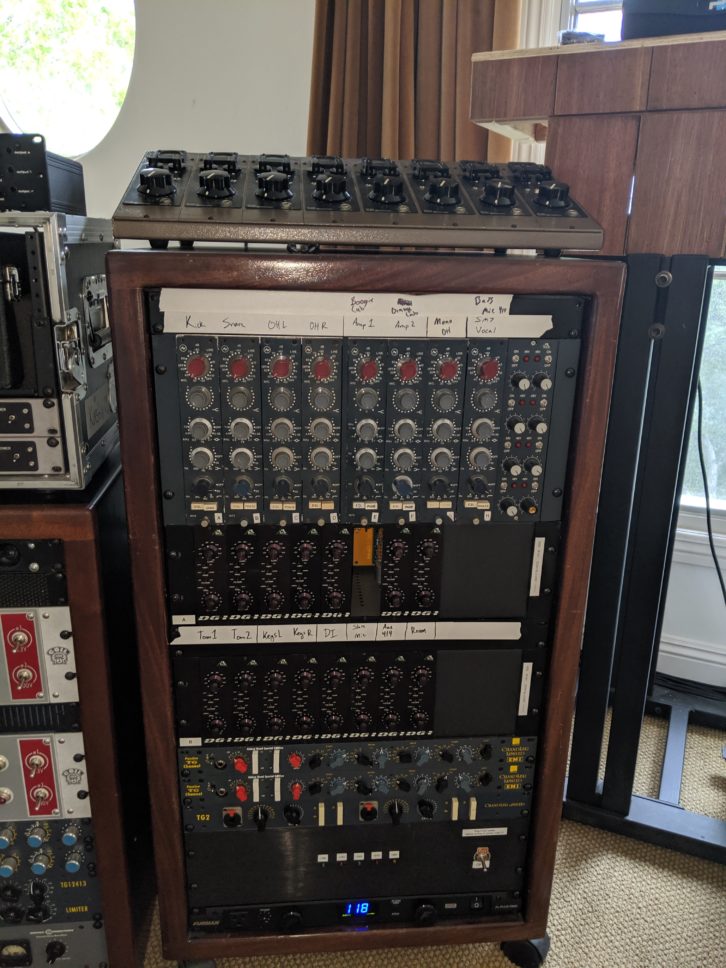
The album was tracked to Pro Tools, though Kurstin brought his own Logic rig. “Having the Logic rig setup was essential,” he explains. “It helped with creating a loop or a texture quickly. Also, there are some unique ways of blowing out a guitar sound with the OG guitar amp plug-in that is hard to replicate. I can also sample voices, and play them MIDI; things like that.”
Thorp and Pasco wanted the ability to record, edit and play back in both Pro Tools and Logic at the same time, taking advantage of the API’s ample patch bay for routing. “That made it much easier to do a quick repatch,” relates Pasco. “Okay, we want to go to Pro Tools? Unpatch, repatch,” just using an aux send and a stereo pair of buses.
For example, the main guitar on the opening track, “Making a Fire,” was bused to Logic to allow Kurstin to apply a signature effect, whose return was instantly tracked in Pro Tools, with the two slaved together using MIDI timecode. “I could have Logic following Pro Tools at any time,” Pasco describes. “It would grab whatever was going on, and when Greg would say, ‘Hey, I wanna get this sound,’ he could pull it into Logic, sit down and do his thing, and we’d fly it back into Pro Tools”.
A pair of Apogee Symphony I/O Mk II units were used for conversion into Pro Tools, with an Apogee Symphony Mk I for the Logic rig. “Pro Tools was hooked up to all of the direct outputs of the desk,” Pasco says, “and then it also had six or eight buses, going directly from the outputs of the desk into the Apogees. The Logic was receiving buses 7 and 8 into the Logic Apogee.” Outputs of both Pro Tools and Logic also returned to the desk.
